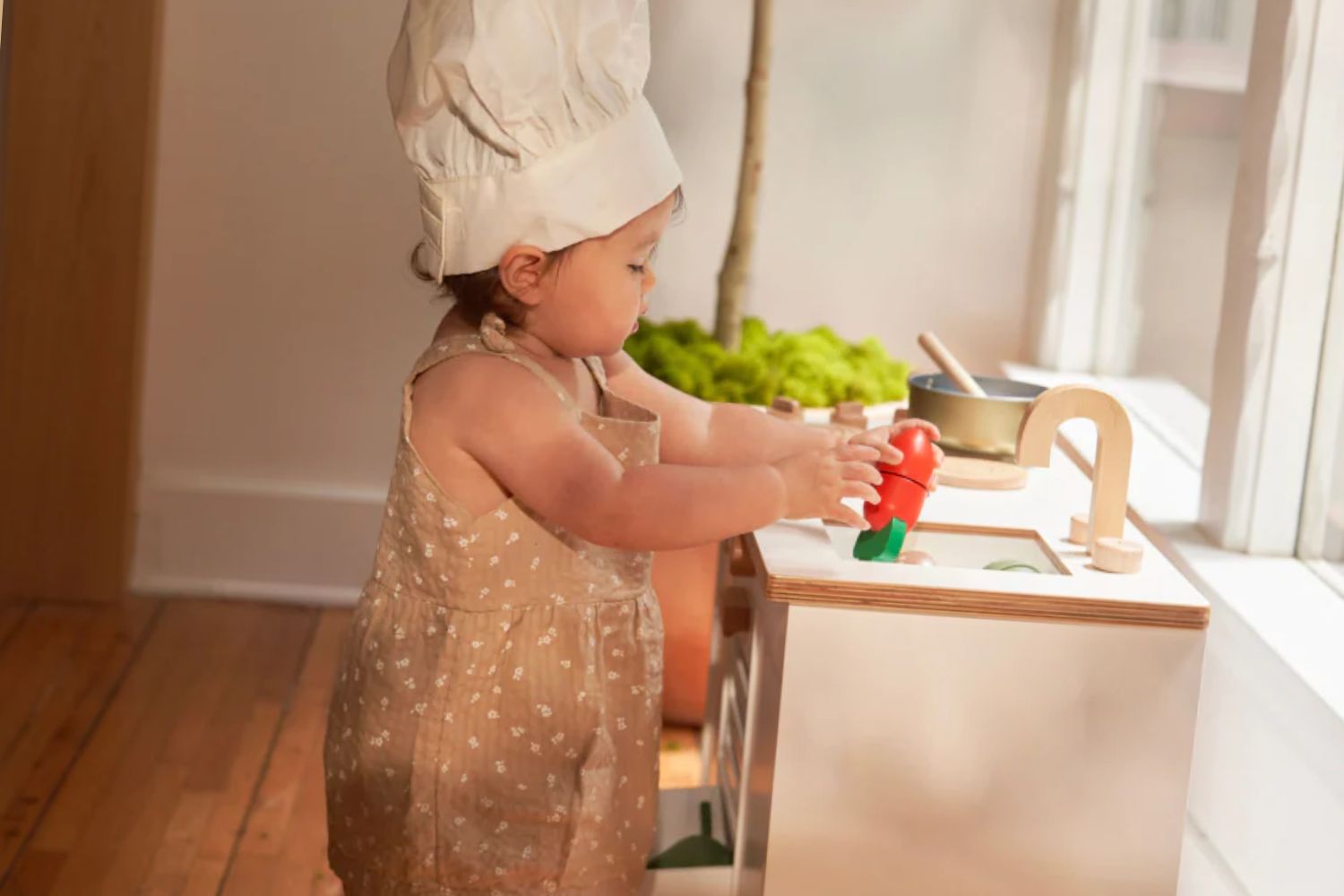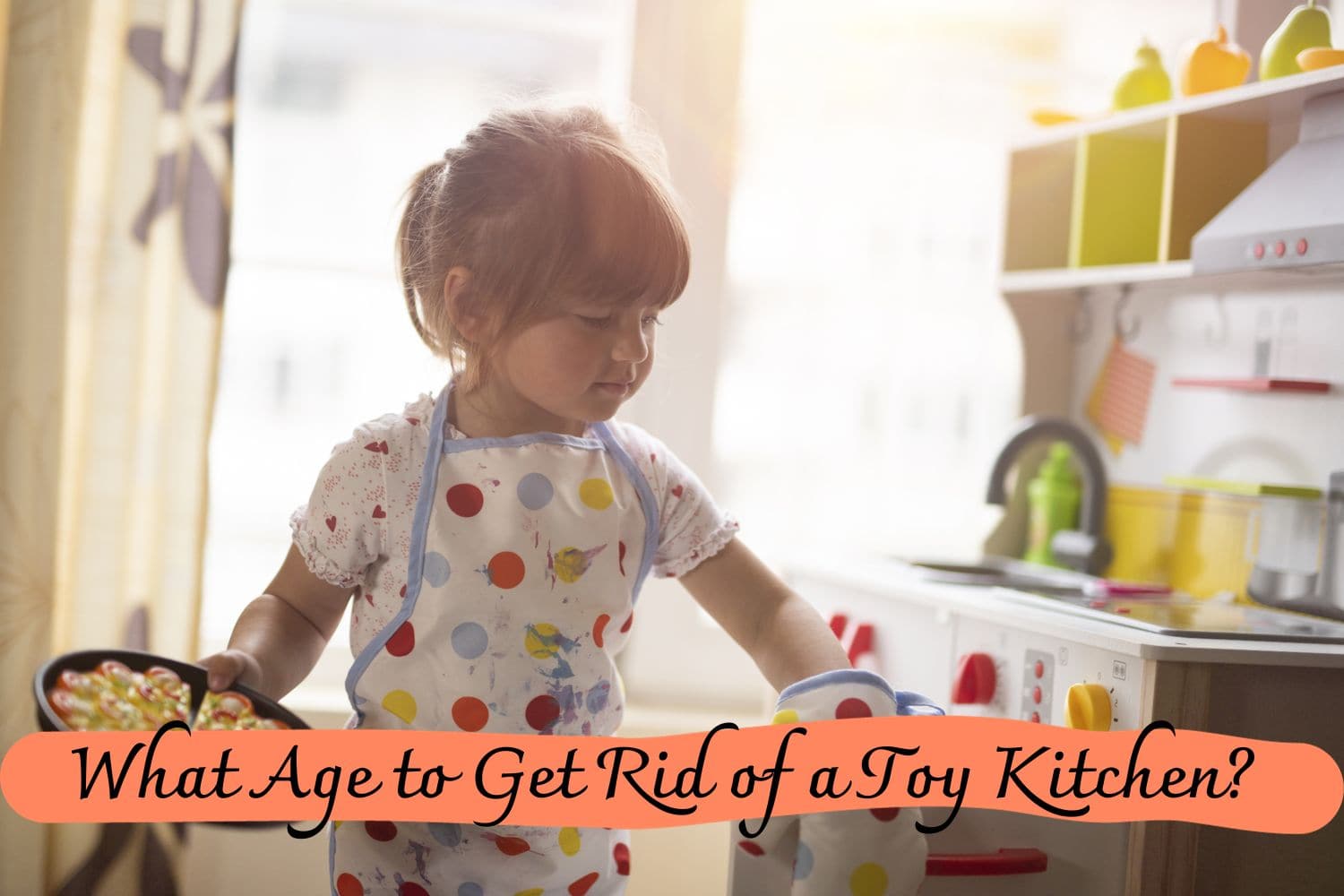Don’t know what age to get rid of a toy kitchen? Read on for helpful tips and advice!
What Age to Get Rid of a Toy Kitchen?
Are you wondering what age to get rid of a toy kitchen?
It’s up to your children, some will expose their unexcited at 5 to 8 years old. In my opinion, they won’t outgrow them until at least 11 years old.
Whether your tot constantly cooks up imaginary meals or their little chef’s hat has been put away for some time, it can be not easy knowing when to say goodbye.
From considering developmental milestones and play-styles to insurance reasons and storage concerns, several factors should be considered before deciding if the time is right for you and your family.
This blog post will provide helpful advice on what age might be best suited for getting rid of a toy kitchen while taking all considerations into account so that you can make an informed decision as a parent!
Age-appropriate Tasks to Keep a Toy Kitchen Interesting

Before we get into discussing an appropriate age for getting rid of a toy kitchen, let’s first look at some age-appropriate tasks that can keep your child interested and engaged with their play kitchen.
- Toddlers (1-3 years old): At this stage, children are starting to develop their fine motor skills and hand-eye coordination. Keep the toy kitchen activities simple by introducing basic actions such as stirring, pouring, and stacking.
- Preschoolers (3-5 years old): As children continue to develop their motor skills, they can start exploring more complex tasks like using utensils and identifying food groups. Pretend play also becomes more advanced at this age, so encourage them to come up with new scenarios and storylines in their toy kitchen.
- Elementary school-aged children (5-11 years old): By this age, children are developing problem-solving skills and can handle more complex tasks. Encourage them to cook simple meals with play food or use their toy kitchen as a restaurant for friends and family.
What Age to Get Rid of a Toy Kitchen?
A play kitchen is a must-have for every child’s toy room. Not only is it versatile and engaging, but it also grows with your child, providing endless opportunities for learning and development.
These kitchens come in a wide range of sizes, making them suitable for any home, no matter how small. You don’t need a dedicated playroom or a lot of space. Some can even be used as outdoor toys called Mud Kitchens, expanding their usefulness and your child’s learning experiences.
By the age of two, most children already have a play kitchen. At this stage, their play is simple and imitates what they see adults doing, like making sandwiches or washing dishes.
A play kitchen is more than just a toy – it’s a valuable tool for a child’s development. It stimulates creativity, social skills, and imaginative play. When children play together, their imaginations soar, and they can create intricate storylines. This helps them learn to take turns and work together.
Many play kitchens come with accessories that enhance the experience. From realistic play food to Velcro attachments for practicing cutting skills, these accessories make play more enjoyable and help develop fine motor skills.
Counting and color recognition can also be seamlessly integrated into play. Young toddlers can count and categorize food items by color, while older children can delve into more complex mathematics like dividing apples among customers.
In my opinion, a play kitchen remains relevant until at least 11 years old. It offers invaluable lessons and opportunities for development, including math, color recognition, problem-solving, creativity, and, most importantly, having fun!
Considerations Before Saying Goodbye
Now that we have a better understanding of age-appropriate tasks, let’s discuss some important considerations to keep in mind when deciding if it’s time to get rid of your child’s toy kitchen.
- Developmental milestones: Is your child still actively playing with their toy kitchen and using it in new and creative ways? If so, they may not be ready to give it up just yet.
- Play-style changes: Children’s interests and play styles can change as they get older. If your child has stopped playing with their toy kitchen altogether, it may be a sign that they have outgrown it.
- Safety concerns: As children grow taller and stronger, there may be safety concerns with smaller toys. Make sure to regularly check for any loose or broken parts in the toy kitchen and replace them if necessary.
- Storage space: If you have limited storage space, it may be necessary to get rid of the toy kitchen to make room for other toys and activities that align with your child’s current interests.
Conclusion
Now you’re armed with the tips and knowledge to make the right decision when it comes to getting rid of your child’s beloved toy kitchen.
You don’t have to rush – even if your child outgrows this journey it may be special enough for them to keep around as a memento for years to come.
Ultimately, it is up to you and your family’s needs in the situation; however, we believe that after looking at the data, evidence, and personal opinion – age six is the right time for most parents and children.
At age six children are usually starting school and ready to explore and learn new things while having fun doing so. This gives them plenty of time to figure out their interests in life while still keeping some cherishable childhood memories alive along the way.
So go ahead, and take a look around your kids’ room; what memories do you have in there that could stay or need to go? Take those memories into consideration but also remember the general tip that Age Six is often the best time when it comes to getting rid of old toy kitchens.
Thanks for reading our article What Age to Get Rid of a Toy Kitchen? If you want to know more information, visit our website here.
Read more:

